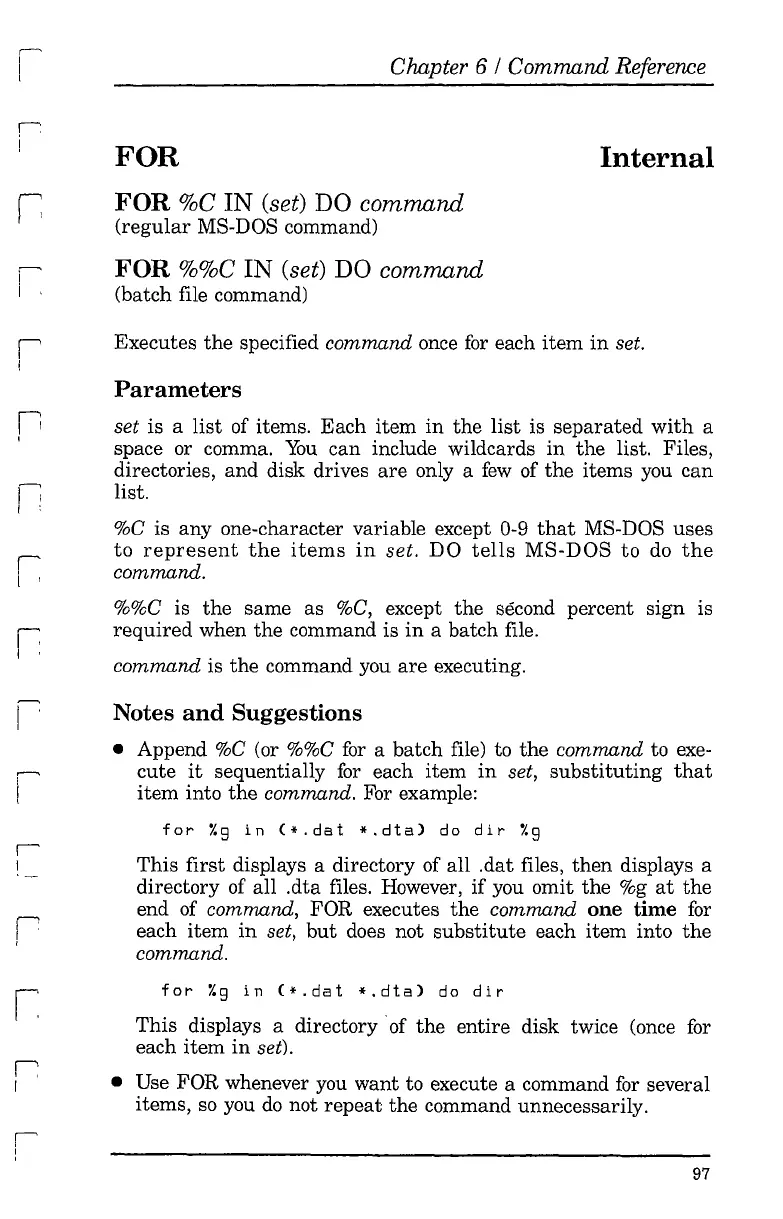r
!
FOR
Chapter 6 / Command Reference
Internal
!
I
I'
i
n
,
I~
I .
I'
I '
~
I '
I
I
r
I
!
I'
I
FOR
%C
IN (set) DO
command
(regular
MS-DOS command)
FOR
%%C IN (set) DO
command
(batch file command)
Executes
the
specified command once
for
each item
in
set.
Parameters
set is a
list
of items. Each item
in
the
list
is
separated
with
a
space or comma.
You
can
include wildcards
in
the
list. Files,
directories,
and
disk drives
are
only a
few
of the items
you
can
list.
%C is
anyone-character
variable except 0-9
that
MS-DOS uses
to
represent
the
items
in
set. DO
tells
MS-DOS
to
do
the
command.
%%C is the same as %C, except
the
second percent sign is
required
when
the
command is
in
a batch file.
command is
the
command you
are
executing.
Notes
and
Suggestions
• Append %C (or %%C
for
a batch file) to
the
command to exe-
cute
it
sequentially
for
each item
in
set,
substituting
that
item into
the
command. For example:
for
roB
in
(*.dat
*.dta)
do
dir
roB
This first displays a directory of all .dat files, then displays a
directory of all
.dta
files. However,
if
you omit the
%g
at
the
end of command, FOR executes
the
command one time
for
each item
in
set,
but
does not
substitute
each item into
the
command.
for
roB
in
(*.dat
*.dta)
do
dir
This displays a directory of
the
entire disk twice (once
for
each item
in
set).
• Use FOR whenever
you
want to execute a command
for
several
items,
so
you
do
not
repeat
the
command unnecessarily.
97
